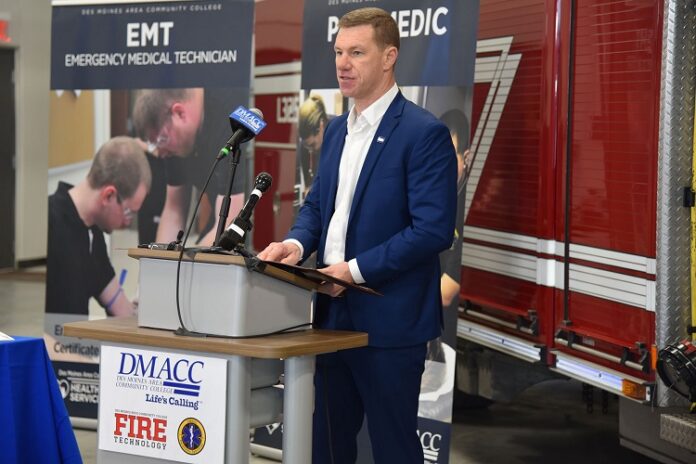
ANKENY, Iowa — DMACC has created a new career path that combines paramedic training with a concentration in fire science. Called the Emergency Response AAS degree, the new program will provide more well-rounded first responders who can serve multiple roles within fire departments.
“Until now, a student either pursued a fire science degree or they took a health sciences route to become a paramedic,” said Dr. Arthur Brown, dean of DMACC Health and Public Services. “We’ve now combined those two roles to make a more skilled and capable graduate. These students are highly trained and will be prepared to fight fires and save lives in communities across Iowa.”
While the new integrated degree is not unique in the U.S., only a few colleges and universities are offering it. DMACC is the first college in Iowa to offer the new pathway.
“A Paramedic Associate degree with a fire science concentration is an efficient way for a DMACC student to obtain all the needed emergency response certifications and be job ready upon graduation,” said Joel Otte, Emergency Medical Services instructor.
Otte also noted these graduates will likely go to the top of a department’s hiring list because of their added training.
Fire science is the study of all characteristics of a fire, from fire prevention, behavior and investigation to techniques of extinguishing a fire, while a paramedic is a health care professional who provides advanced emergency medical care to both sick and injured patients.
Otte said the new degree comes at an important time as fire departments across the state face a shortage both of paramedics and trained firefighters. He said the combination of retirements and growing communities is contributing to a shortage of emergency responders.
“Our graduates will have a nearly 100% placement rate, and our program is growing at a fast pace to keep up with this labor shortage,” said Otte.
Clive Fire Chief Rick Roe is an advocate of the new DMACC degree. He said the fast-growing Des Moines metro area has increasing calls for fire and EMS services, and many suburban communities have transitioned from volunteer staffing models to full-time, paid departments. The changes have greatly increased the demand for job-ready, entry-level personnel.
“The new DMACC Paramedic Associates degree with a concentration in the fire service serves a critical need in central Iowa,” Roe said. “Never before (in Iowa) has there been a dual paramedic/firefighter training program available for those wanting to pursue a career in fire and EMS. I could not be more enthusiastic about the educational need this program fulfills as well as the future stream of qualified applicants that will be entering the work force.”
While DMACC paramedic and fire science enrollment is up nearly 40% over the last few years, Otte said the program has the capacity to serve more students.
“It’s not an easy profession,” he said, “but it’s very rewarding to help people during their greatest moment of need and serve communities where we live.”
Starting pay for a DMACC graduate with an Emergency Response degree is around $60,000 and can go up to $70,000 or more with overtime, Otte said.
The new Emergency Response program will start for new students on the DMACC Ankeny Campus in the fall 2022 semester, which begins on Aug. 24.
Dan Ivis is the media liaison for DMACC marketing and public relations.















